
Show Jumping Hall of Fame Collection
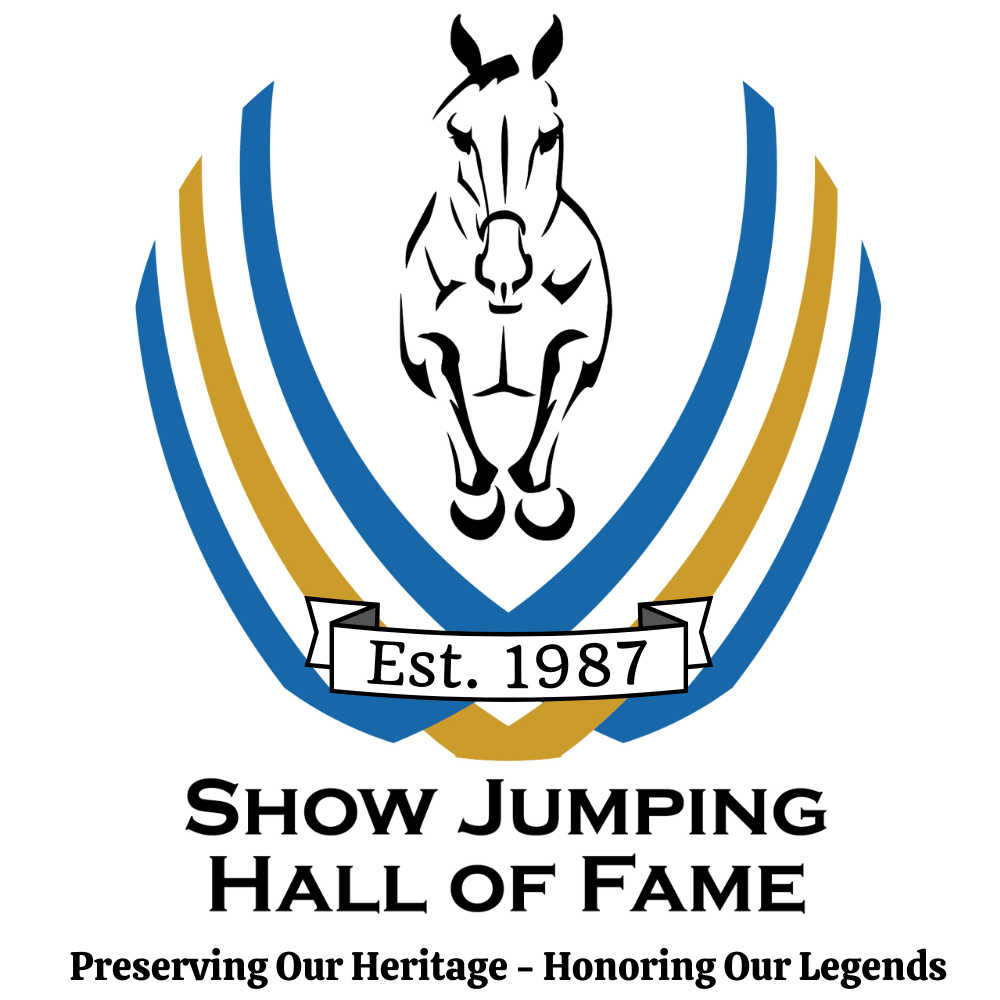
The Show Jumping Hall of Fame and Museum was established in 1987 to promote show jumping and commemorate legendary men, women, and horses who have made great contributions to the sport.
Its vision is to educate horse lovers and devoted equestrians alike by sharing the sport's legends, lore, and landmark achievements.
The Hall of Fame formally opened in 1989 at Busch Gardens, in Tampa, Florida. Since 2010, the Show Jumping Hall of Fame has been located at the Kentucky Horse Park. Mementos and artifacts from the sport’s history are on display in the Wheeler Museum. Plaques honoring each of the inductees can be seen at the Horse Park’s Rolex Stadium and online at www.showjumpinghalloffame.net.
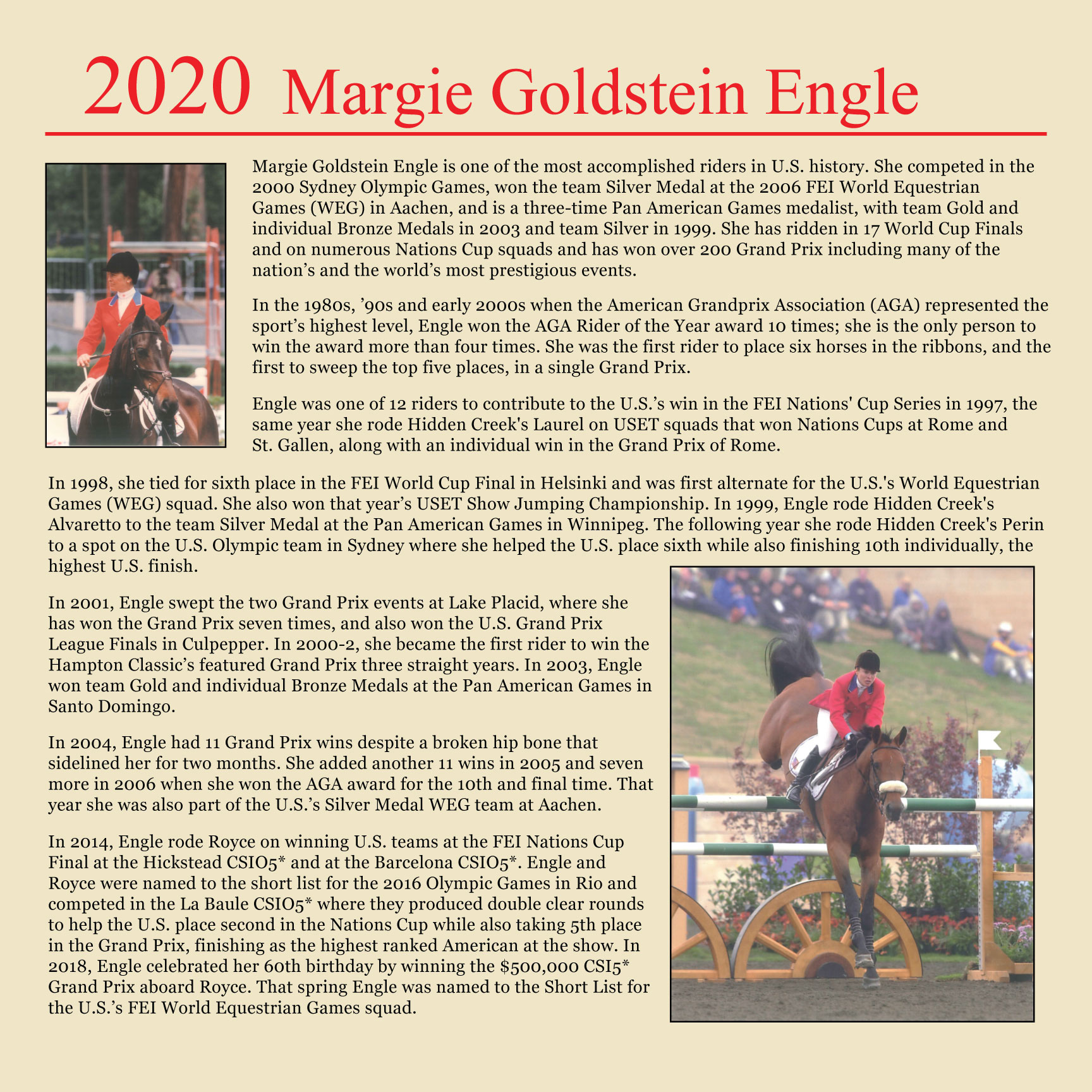
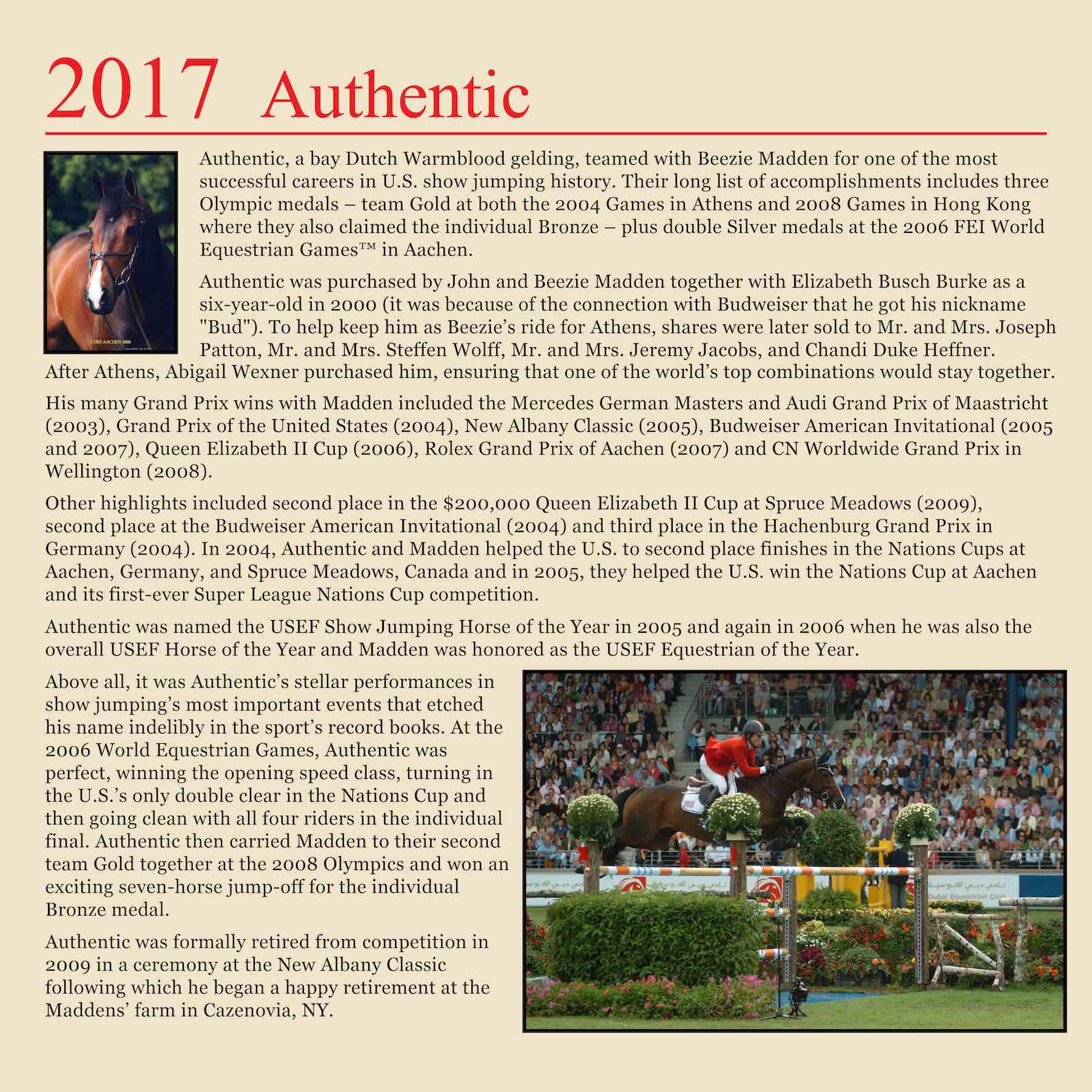
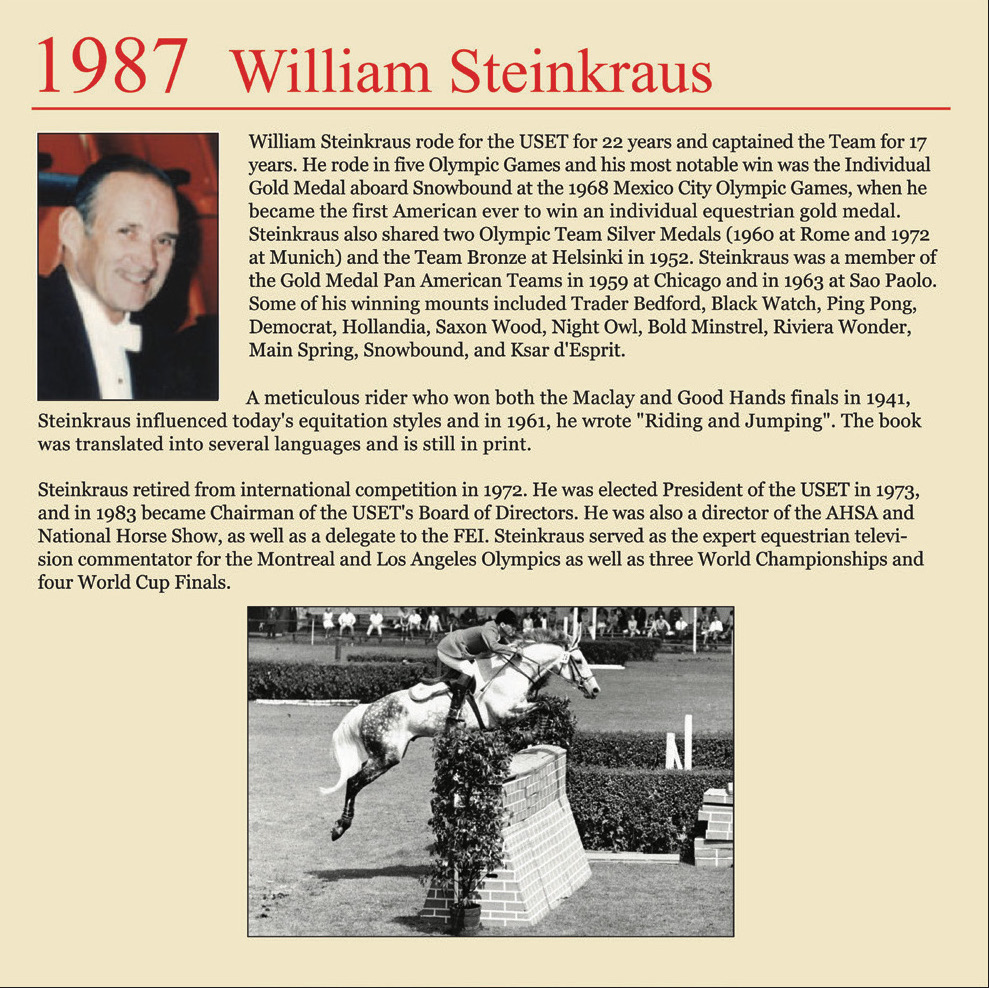
At the Wheeler Museum
Items in the permanent collection include tack and attire worn by Hall of Famers, books written by inductees, and mementos saved by horse owners, fans, and horse show managers. Relevant artifacts from the Hall of Fame are incorporated into the Wheeler Museum's rotating thematic exhibits, and memorabilia of great moments in American show jumping history are always on display in the dedicated Hall of Fame space.
Currently on Display
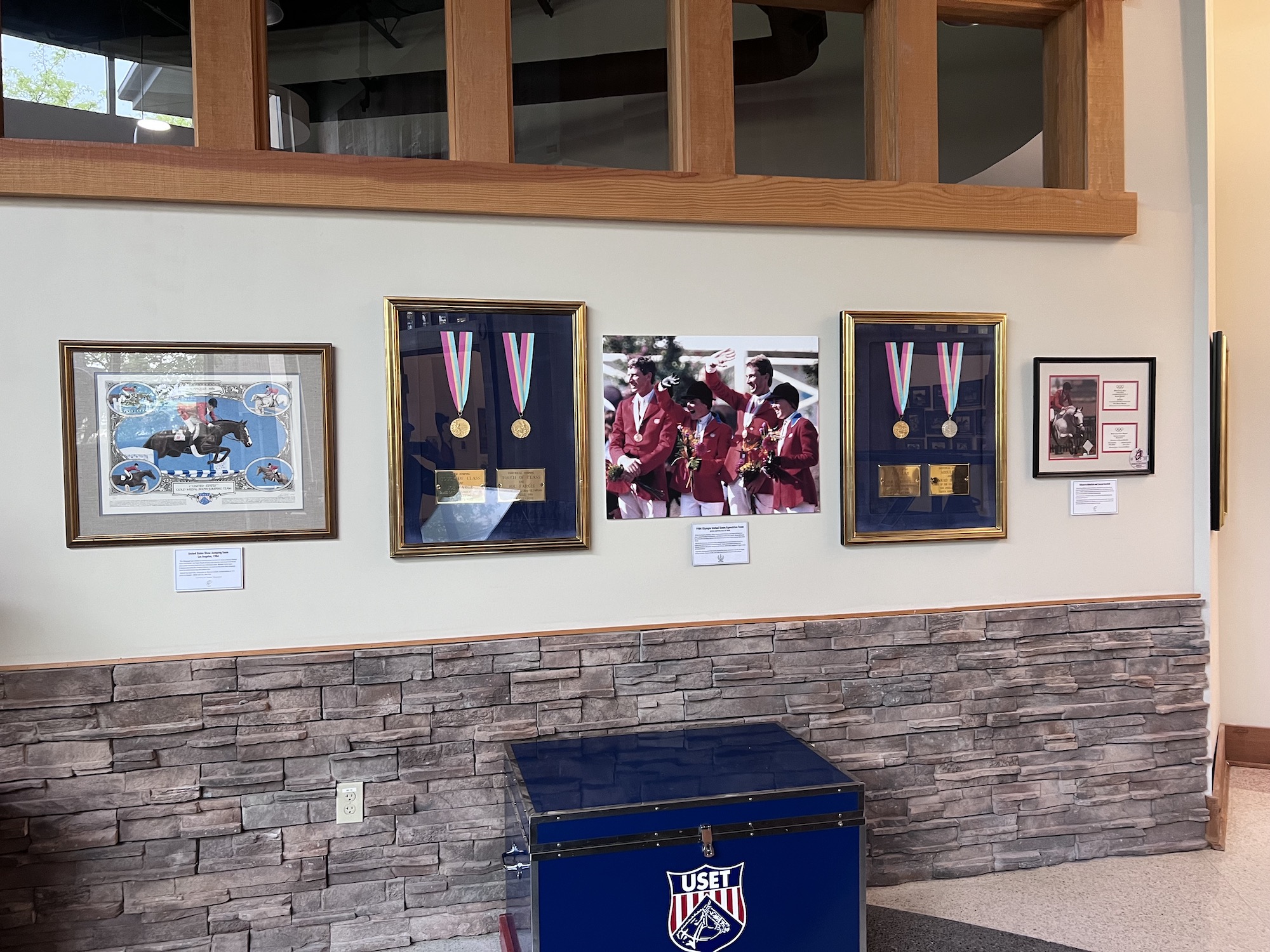
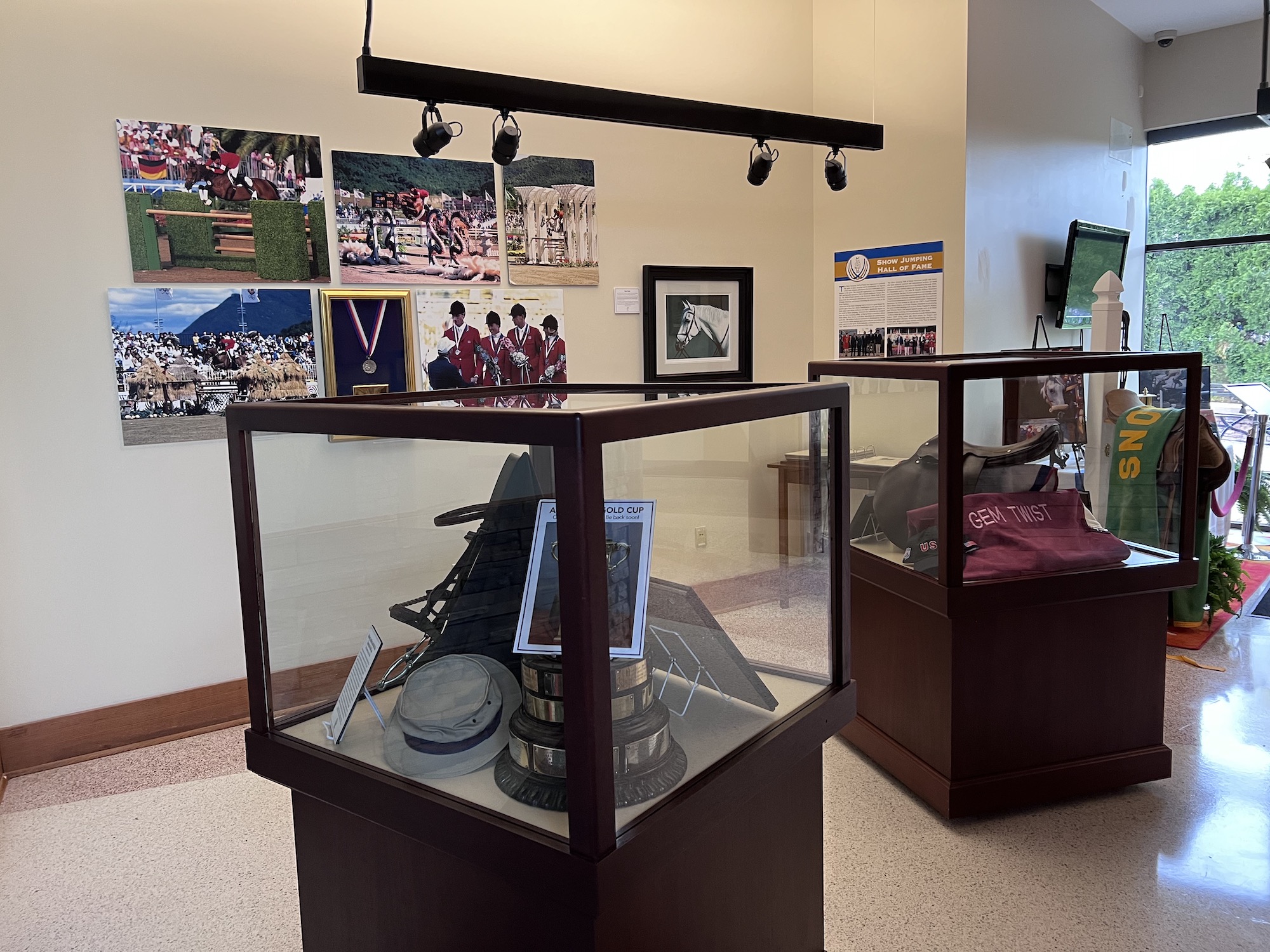
Items currently on exhibit include (L) the 1984 Olympic Team and Individual Gold Medals won by Joe Fargis (class of 2007) and Touch of Class (class of 2000) and Team Gold and Individual Silver Medals won by Conrad Homfeld (class of 2006) and Abdullah (class of 2008) displayed above a United States Equestrian Team tack trunk; (R) tributes to Idle Dice (class of 1987), Rodney Jenkins (class of 1999), and Harry Gill (class of 2002) as well as Gem Twist (class of 2002) and Frank Chapot (class of 1994), and the 1998 Olympic Team Silver Medalists--Joe Fargis and Mill Pearl, Greg Best and Gem Twist, Lisa Jacquin and For the Moment (class of 2005), and Anne Kursinski (class of 2016) and Starman (class of 2012).
Other Treasures from the Permanent Collection
Artifacts in the Show Jumping Hall of Fame Collection offer a glimpse of moments in show jumping history from bygone eras as well as memories of people, horses, and events that left a lasting mark on the sport we know today.
USET Equipment, 1950s-1960s
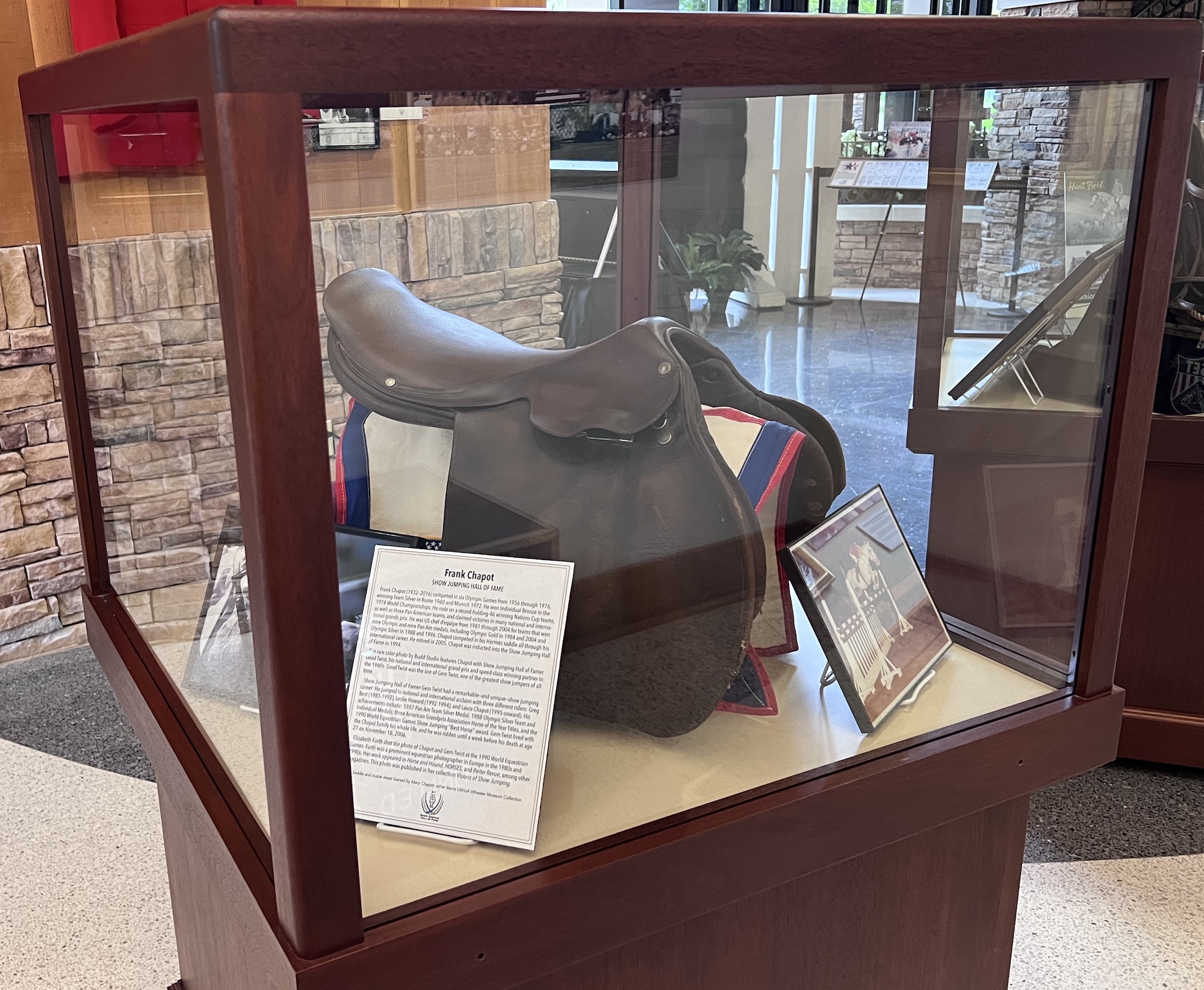
Like teams in other sports, the United States Equestrian Team horses and riders were outfitted with equipment and apparel in team colors. Each horse’s stall was labeled with the horse’s name, pedigree, and owner or donor information. Until the mid-1970s, most horses who competed internationally for the United States were loaned or donated to the team, where they would be matched up with the best suitable rider. Notable are stall plates for Trail Guide (class of 1995), Sinjon (class of 1999), and Bold Minstrel (class of 2018).
Bill Steinkraus (class of 1987) developed an extraordinary feel for horses and their way of going. In 1962 as captain of the USET, he contracted with Hermès to design a jumping saddle that then became the saddle of choice for other USET riders, including Frank Chapot (class of 1994), whose Hermès saddle is on loan from the Chapot Family.
World Equestrian Games and World Cup Commemoratives
With Balbuco (class of 2009), Homfeld rode on the Bronze Medal Team at the 1978 World Show Jumping Championships in Aachen, Germany. In 1980 they won the World Cup finals, held that year in Baltimore.
Homfeld and his 1984 Olympic Medals partner Abdullah (class of 2008) won the 1985 World Cup finals, held in Berlin, making Homfeld the first two-time World Cup winner. The photo of Abdullah hung in the original Hall of Fame display at Busch Gardens in Tampa.
At the 1986 World Show Jumping Championships in Aachen, Homfeld and Abdullah won Individual Silver and Team Gold along with Katie Monahan Prudent (class of 2015) and Amadia, Michael Matz (class of 2005) and Chef, and Katherine Burdsall and The Natural (class of 2016).
Among the equestrian artwork in the collection is Susan Von Waggoner's portrait of Balbuco.
Commemorative Stall Plaques
Ornamental stall plaques have been awarded by European shows along with ribbons and prize money. A number of plaques won by Hall of Famers during European tours in the 1960s and 1970s are housed in the collection. We don’t quite know their origins, but we do have some clues to their backstory.
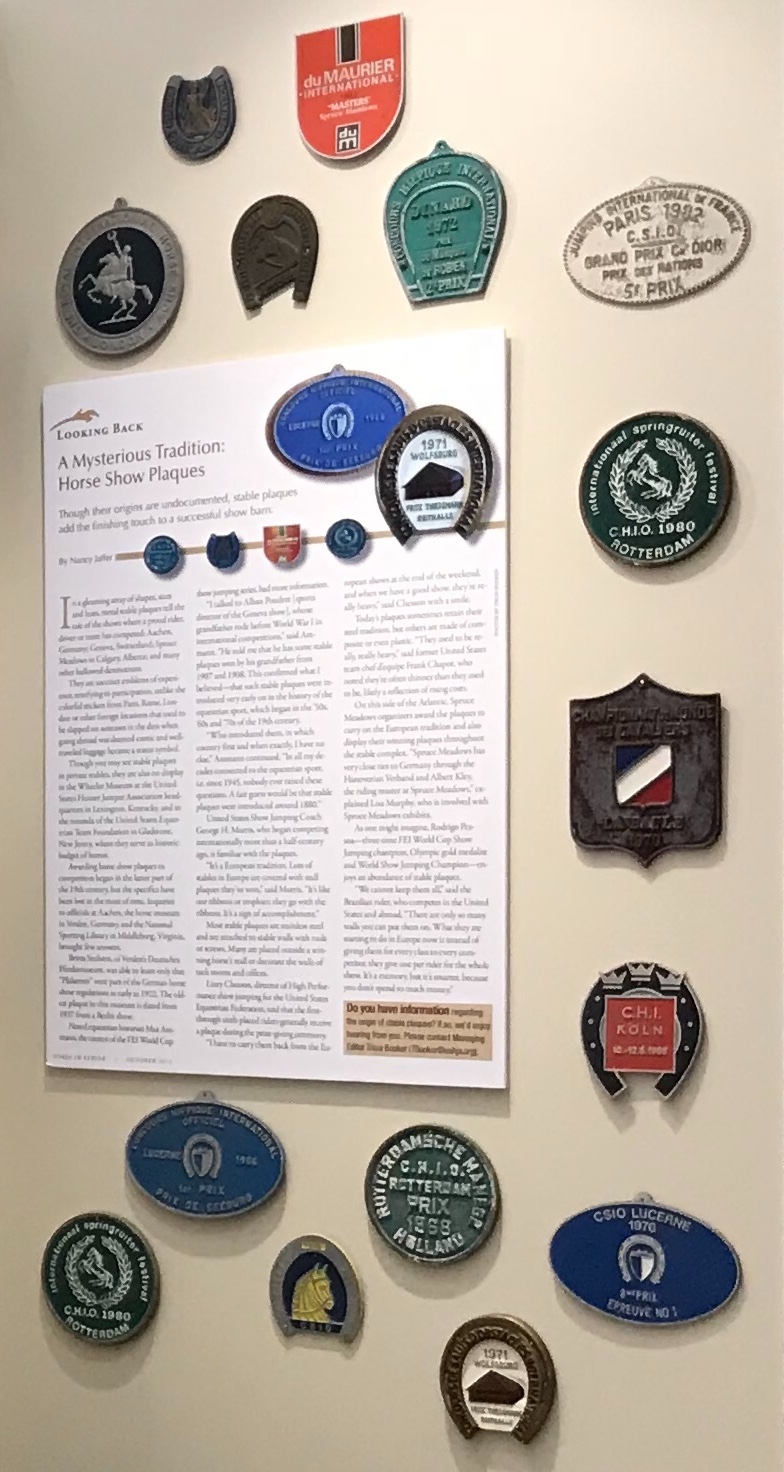
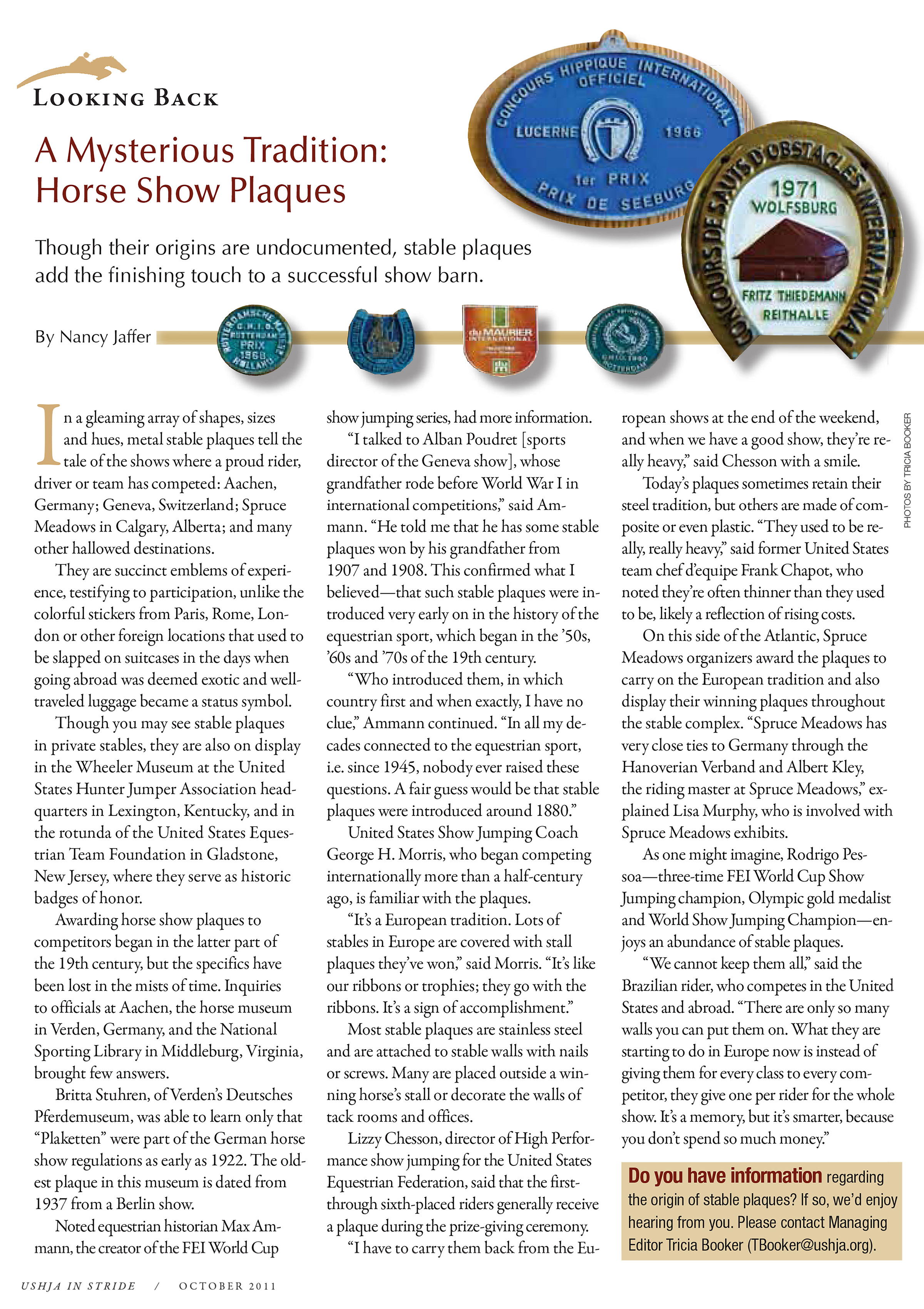
19th-Century "Horse Exerciser"
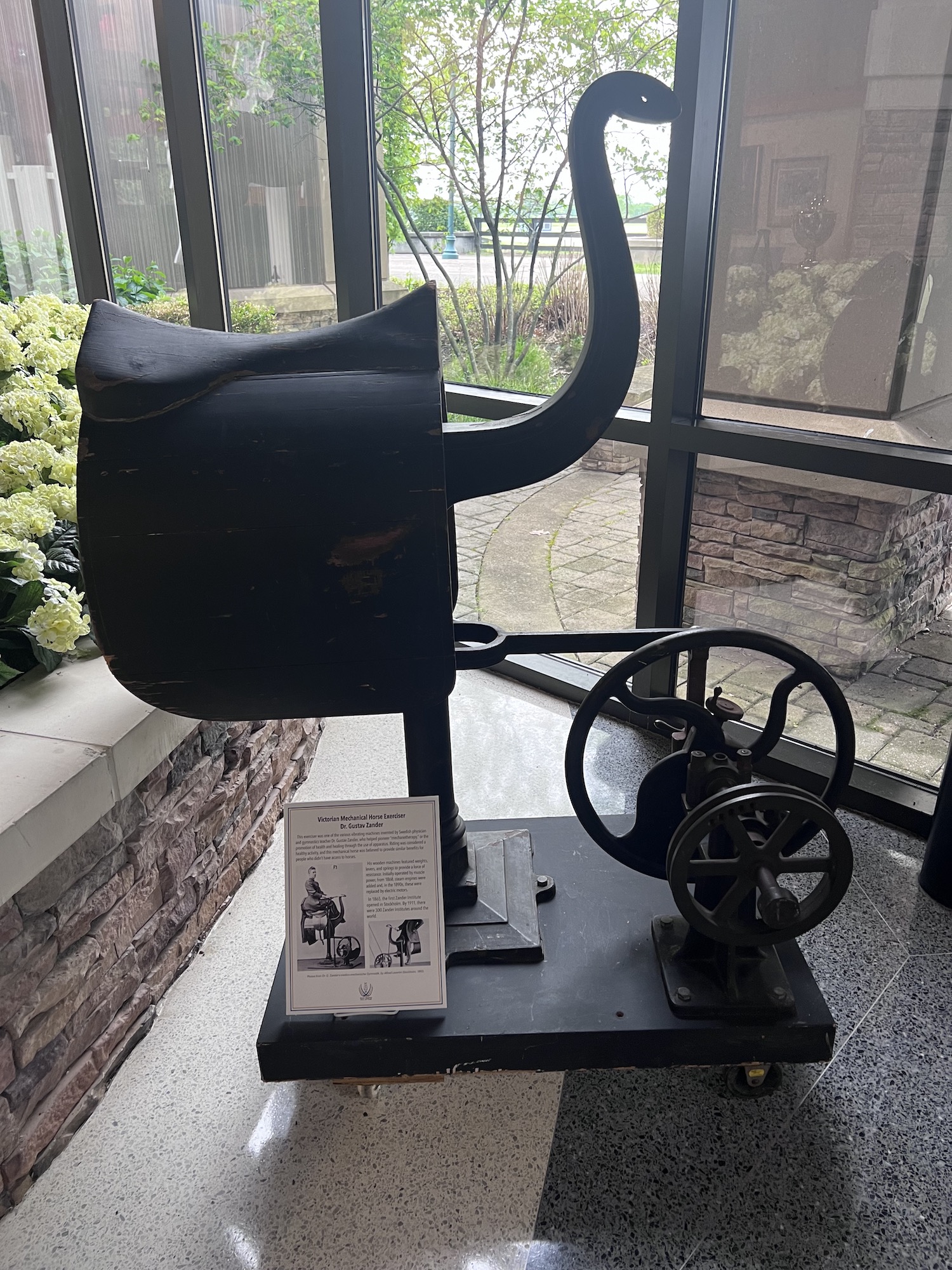
"For those who are unable – or who don’t dare – to get up on horseback, this apparatus vibrates the rider’s body."
Initially operated by the user's own muscle power, steam engines were used by 1868, which were then replaced by electric motors in the 1890. The exercisers were featured at the more than 300 Zander Institutes operating in 1911 around the world.
Thanks to Jane Forbes Clark (class of 2011), an original "horse exerciser" is in the permanent collection and on display at the Wheeler Museum.
Come See For Yourself!
The Wheeler Museum is located in the USHJA Headquarters at the Kentucky Horse Park in Lexington, Kentucky. The museum is open tot he public Wednesday through Friday from 9:00 a.m. to 4:00 p.m.




